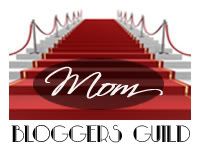If you've had a chance to drop by at Dance of Motherhood, then you already know
this particular post comes with such incredible timing.
The National Breast Cancer Foundation estimates that each year, over 200,000 women will be diagnosed with breast cancer and over 40,000 die. One woman in eight either has or will develop breast cancer in her lifetime. Approximately 1,700 men will be diagnosed with breast cancer and 450 will die each year.
If detected early, the five-year survival rate for breast cancer exceeds 96%. Mammograms are among the best early detection methods, yet 13 million U.S. women 40 years of age or older have never had a mammogram.
The National Cancer Institute and U.S. Department of Health and Human Services recommend that women in their forties and older have mammograms every one to two years. A complete early detection plan also includes regular clinical breast examinations by a trained medical professional. Monthly breast self-exams are suggested in addition.
Early Detection/Prevention is better than CURE as ALWAYS!If you are afraid of going to the doctor for a mammogram then do a personal breast-exam, you can do it alone or with your partner to add more fun to it.
It's best to do the every month a week before your period.
Here's the easiest way to do a self-breast exam:
The Five Steps of a Breast Self-ExamStep 1: Begin by looking at your breasts in the mirror with your shoulders straight and your arms on your hips.
Here's what you should look for: breasts that are their usual size, shape, and color
breasts that are evenly shaped without visible distortion or swelling.
If you see any of the following changes, bring them to your doctor's attention:1. dimpling,
2. puckering or bulging of the skin,
3, a nipple that has changed position or an inverted nipple (pushed inward instead of sticking out),
4. redness, soreness, rash, or swelling
Step 2: Now, raise your arms and look for the same changes.
Step 3: While you're at the mirror, gently squeeze each nipple between your finger and thumb and check for nipple discharge (this could be a milky or yellow fluid or blood).
Step 4: Next, feel your breasts while lying down, using your right hand to feel your left breast and then your left hand to feel your right breast. Use a firm, smooth touch with the first few fingers of your hand, keeping the fingers flat and together.
Cover the entire breast from top to bottom, side to side—from your collarbone to the top of your abdomen, and from your armpit to your cleavage.
Follow a pattern to be sure that you cover the whole breast. You can begin at the nipple, moving in larger and larger circles until you reach the outer edge of the breast. You can also move your fingers up and down vertically, in rows, as if you were mowing a lawn. Be sure to feel all the breast tissue: just beneath your skin with a soft touch and down deeper with a firmer touch. Begin examining each area with a very soft touch, and then increase pressure so that you can feel the deeper tissue, down to your ribcage.
Step 5: Finally, feel your breasts while you are standing or sitting. Many women find that the easiest way to feel their breasts is when their skin is wet and slippery, so they like to do this step in the shower. Cover your entire breast, using the same hand movements described in Step 4.
To find out other ways to do the self-breast-examination go to this
website.
I am passing this to anyone who is a mother, wife, daughter, sister... or anyone who
mother, wife, daughter, sister... anyone who can stand behind breast cancer research and free mammograms for those who can't pay for them on their own...
















